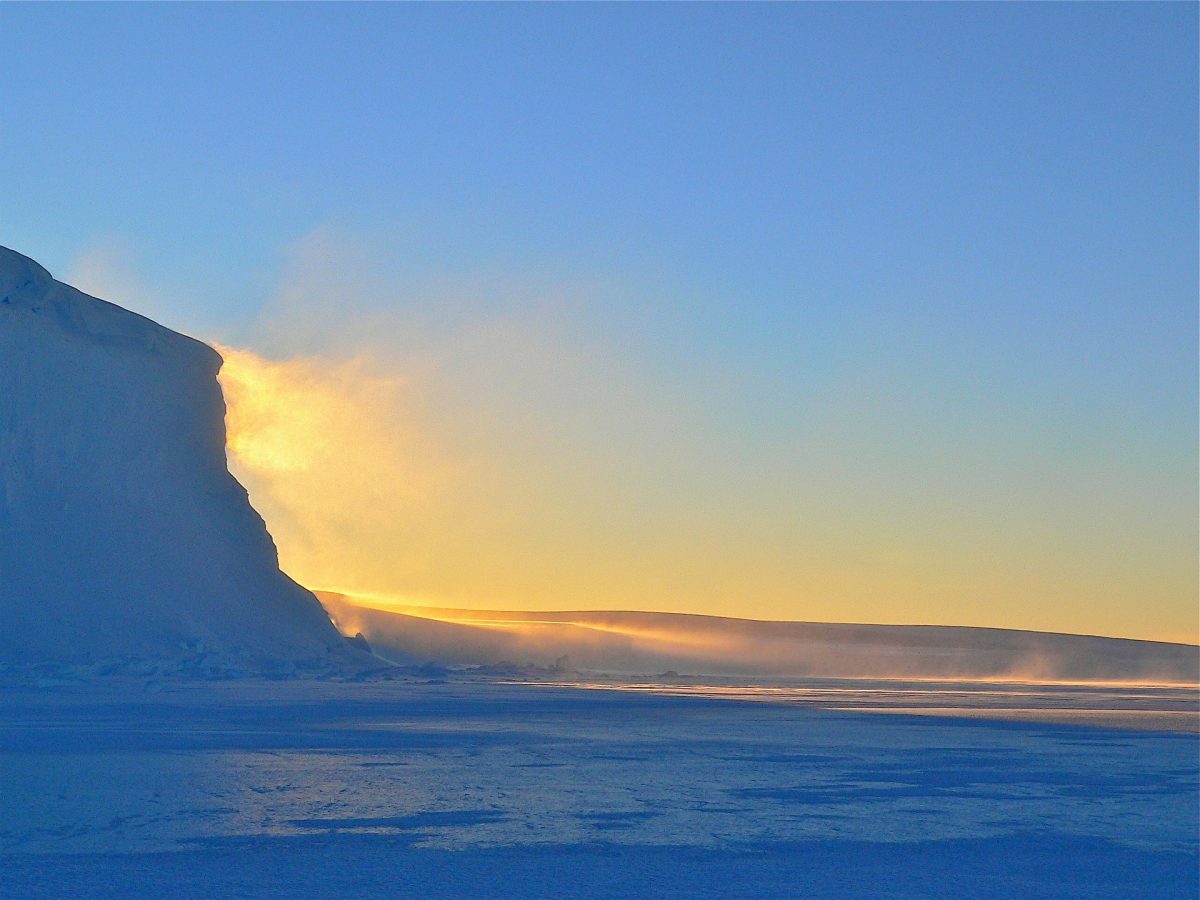Blog
5.1.2021
AI Paving the Way for Polar Science
Florence Grist shares how applying AI to scientific research in polar science is helping to uncover hidden relationships within environmental data and monitor the changing habitats of polar wildlife.


As we speak, Antarctic iceberg A68a is making headlines as it cruises towards South Georgia, having been of interest to scientists since its separation from the Antarctic peninsula in 2017. Undoubtedly, the North and South pole environments are ever-changing: this is partly due to natural cycles, such as the decadal ejection of bergs like A68a from the Larsen C Ice Shelf, but also influenced by unnatural global warming. The polar regions comprise large, complex ecosystems whose ecological relationships are threatened daily by climate change. Applying AI to scientific research in this field helps to uncover hidden relationships within environmental data and monitor the changing habitats of polar wildlife.
A key element of polar science is examining the relationship between the North and South poles. New research evidences their interconnectivity by explaining how the changing climates of either region influence each other. “The Arctic is already entering a completely different climate than just a few decades ago”, says scientist Laura Landrum from the National Centre of Atmospheric Research (NCAR). Their 2020 study, which used computer simulations from 5 world-leading CMIP5 climate models, revealed that the Arctic’s year-to-year temperature variability is moving outside the bounds of any past fluctuations, so much so that the Arctic may start to experience largely ice-free periods in the next several decades. Moreover, atmospheric rivers are changing the Antarctic environment by creating enormous openings in sea ice, known as polynyas, which source heat and moisture to the atmosphere. For information on changing climates, scientists are increasingly turning to models and simulations of the North and South poles, many of which are developed with the use of AI. For example, the 4DAntarctica consortium, an international collaboration of scientists funded by the European Space Agency (ESA) and led by the University of Edinburgh, is creating a digital twin of Antarctica. A critical part of this project is the use of machine learning to process abstract data, such as ice depth measurements, and from this produce accurate, digital maps. These “advance our understanding of the Antarctic Ice Sheet’s supra and subglacial hydrology, its evolution, and its role within the broader ice sheet and ocean systems,” says Dr Noel Gourmelen, Principal Investigator at the School of GeoSciences.
Climatic change, specifically the melting of ice and rising of sea-levels, causes ice sheets thousands of kilometres apart to influence one another. In November, a study led by McGill University revealed that during the most recent glacial cycle, changes in the Antarctic ice sheet were driven by the melting ice sheets in the Northern Hemisphere. “Our results highlight how interconnected the Earth system is, with changes in one part of the planet driving changes in another,” explains Natalya Gomez, professor at McGill’s Department of Earth and Planetary Sciences. AI is playing an important role in tracking iceberg movement. Only this month, the British Antarctic Survey (BAS) has released robots to monitor A68a, for example. Researchers at BAS and the Alan Turing Institute are also exploring the possibility to deploy autonomous robotic platforms that collect observational data from the Arctic Ocean all year round. Since the middle of 2019, they have harnessed powerful AI algorithms to draw advanced insights from sea ice data and predict future ice sheet movement. They are also guided by AI explainability methods, which interpret these predictions and advise future action. Of course, there remain elements of scientific research only attainable by humans, and so projects such as the MOSAiC campaign have allowed researchers to observe the Arctic with their own eyes.
Not only does global warming influence ice sheet movement, but it also increases the vulnerability of polar ecosystems by altering species distributions. “Climatic disruptions can create favourable conditions for the shift of warm-water species into previously colder-water zones,” explains Irene Alabia, Fisheries oceanographer of Hokkaido University’s Arctic Research Center. In September, Alabia and her team developed species distribution models of the Bering and Chukchi Seas to create a picture of marine biodiversity under future (2026-2100) climate conditions. Their findings suggested that species are expected to move poleward, significantly disrupting the Arctic ecosystem. AI has a great record for supporting wildlife conservation and now its skills are being extended to the polar regions. In 2019, NOAA Fisheries scientists at the Alaska Fisheries Science Center teamed up with Kitware, Microsoft and Xnoir.ai to develop AI algorithms that could detect and differentiate marine mammals during aerial surveys of Arctic sea ice. Later in 2020, NOAA embarked on a new project which used Microsoft deep learning to detect and classify beluga whale calls from acoustic data.
Dramatic shifts in the climate and ecology of the North and South poles call for the involvement of technology to aid our conservation efforts. It remains imperative to Verne Global that the AI of the future is sustainably backed to bring the most impactful change to our planet.